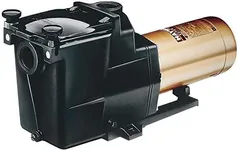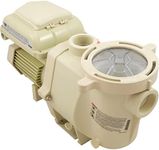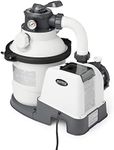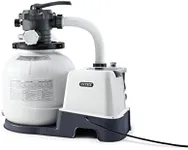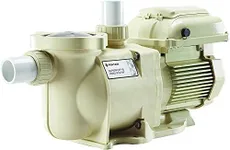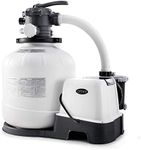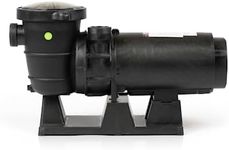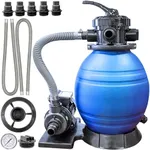Buying Guide for the Best Pool Pumps
Choosing the right pool pump is essential for keeping your pool water clean, clear, and safe to swim in. The pump is the heart of your pool’s circulation system, moving water through the filter and other equipment. When picking a pool pump, you need to consider the size of your pool, how often you use it, and your maintenance preferences. Understanding the main features and specifications will help you select a pump that matches your needs and keeps your pool in great shape.Pump Flow Rate (GPM or LPM)The flow rate tells you how much water the pump can move in a certain amount of time, usually measured in gallons per minute (GPM) or liters per minute (LPM). This is important because your pump needs to circulate all the water in your pool within a certain period, typically 8 hours. Smaller pools can use pumps with lower flow rates, while larger pools need higher flow rates. To pick the right flow rate, calculate your pool’s volume and divide it by the number of hours you want for a full turnover. This will help you find a pump that can handle your pool’s needs without being too powerful or too weak.
Pump Horsepower (HP)Horsepower measures the strength of the pump’s motor. More horsepower means the pump can move water faster and handle more resistance, such as from long pipes or extra equipment like heaters. However, bigger isn’t always better—too much horsepower can waste energy and cause problems with your pool’s plumbing. For small to medium pools, lower horsepower is usually enough, while larger pools or those with lots of features may need more. Match the horsepower to your pool size and setup for the best results.
Single-Speed vs. Variable-SpeedSingle-speed pumps run at one constant speed, while variable-speed pumps can adjust their speed to match your needs. Variable-speed pumps are more energy-efficient and quieter, but they tend to cost more upfront. If you want to save on energy bills and have more control, a variable-speed pump is a good choice. If you have a simple pool setup and don’t mind higher energy use, a single-speed pump can work. Think about how much you use your pool and whether you want to prioritize energy savings or simplicity.
Pump Size and CompatibilityThe physical size of the pump and its connections need to match your pool’s plumbing and available space. Pumps come with different inlet and outlet sizes, so it’s important to check that the pump will fit your existing pipes. Also, make sure the pump’s voltage matches your power supply. If you’re replacing an old pump, try to match the size and connections to make installation easier. Always check compatibility to avoid extra work or the need for new plumbing.
Noise LevelSome pumps are louder than others, which can be a concern if your pool is close to living areas or neighbors. Variable-speed pumps are usually quieter, especially at lower speeds. If noise is important to you, look for pumps that are designed to run quietly. Consider where your pump will be located and how much sound you’re willing to tolerate during operation.
Ease of MaintenancePool pumps need regular cleaning and occasional repairs. Some pumps have features like easy-access baskets for catching debris or clear lids so you can see when cleaning is needed. If you prefer low-maintenance equipment, look for pumps with user-friendly designs and easy-to-find replacement parts. Think about how much time you want to spend on upkeep when choosing your pump.
